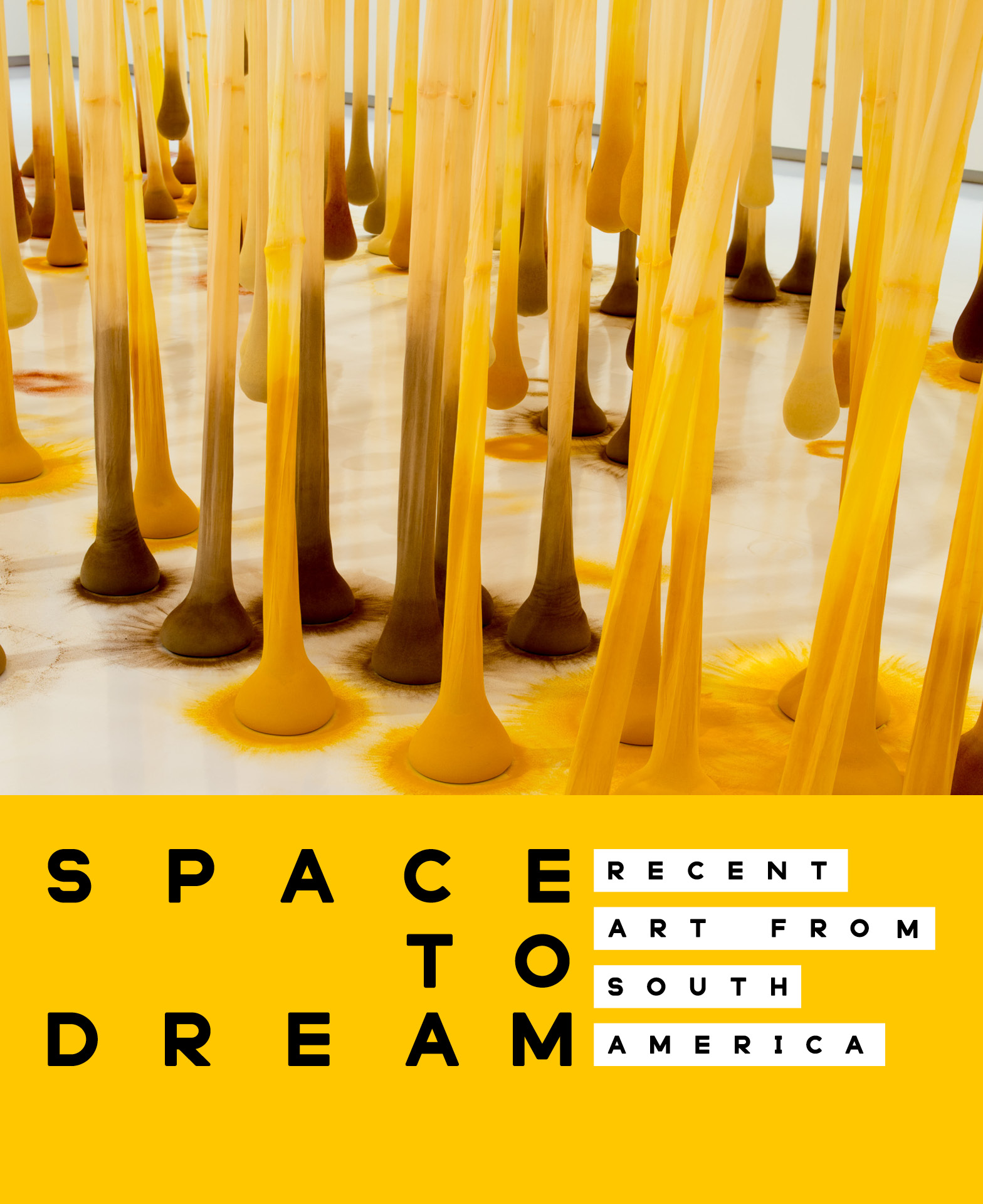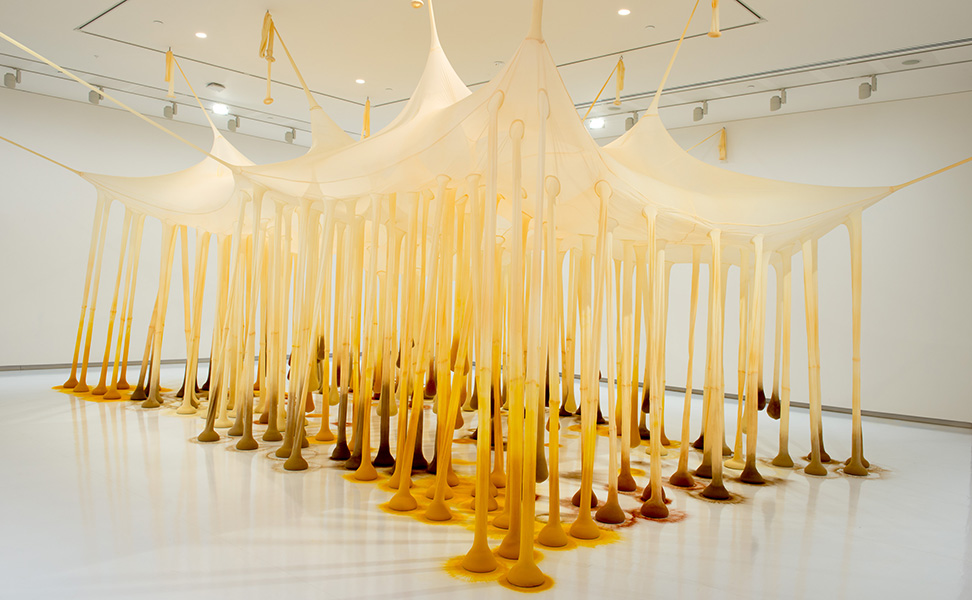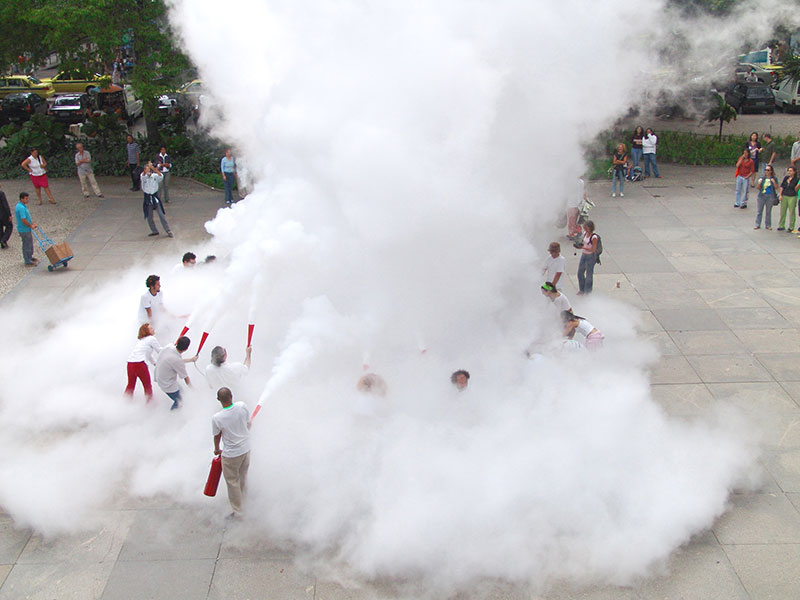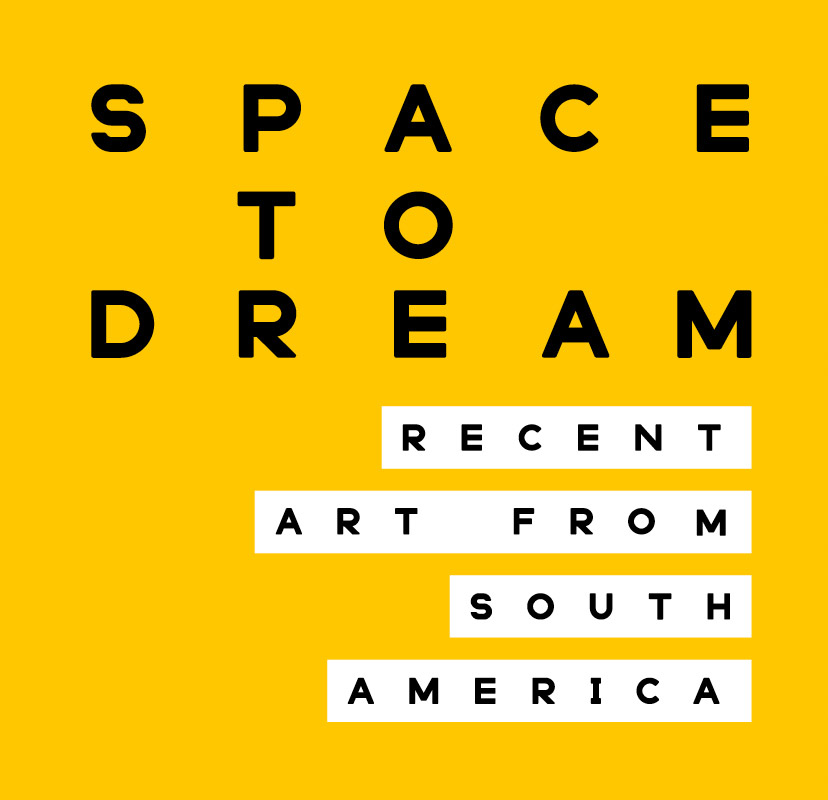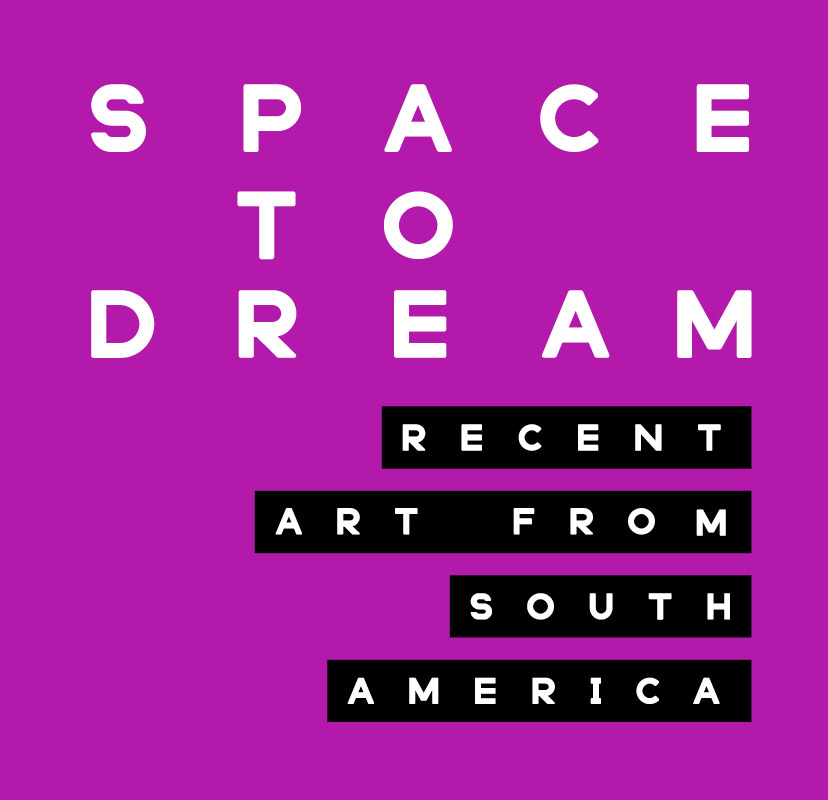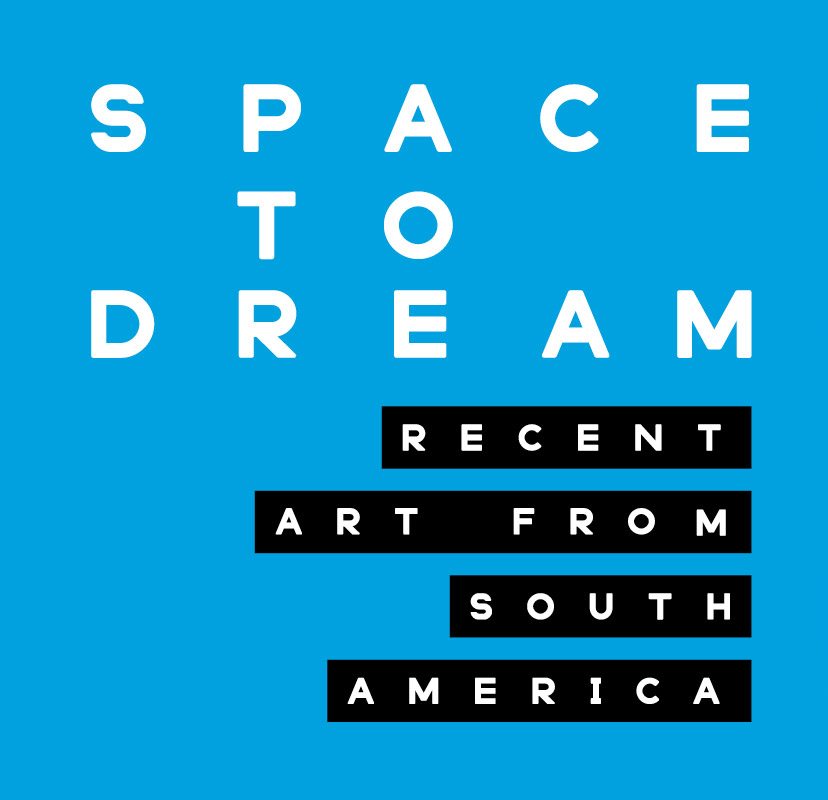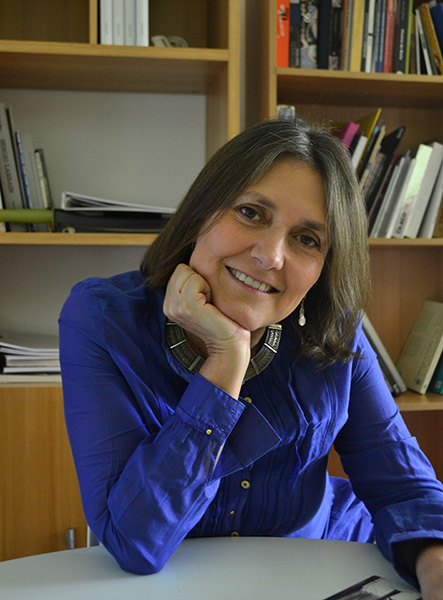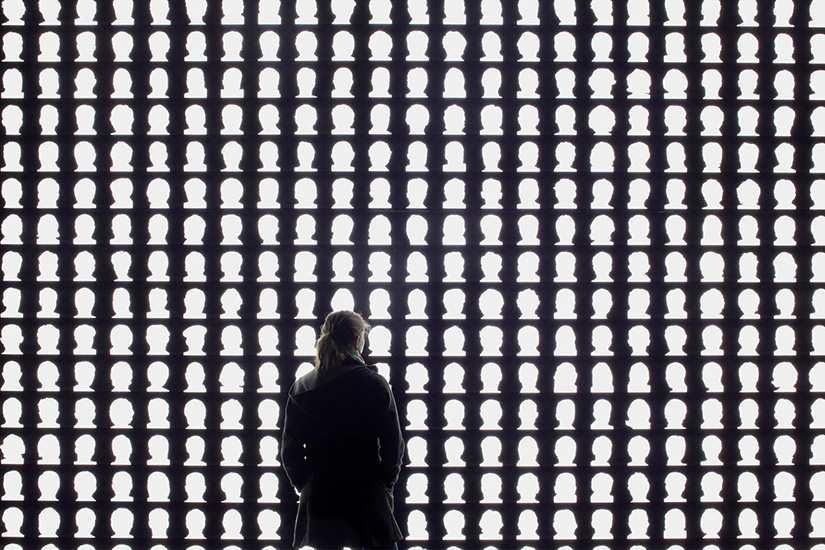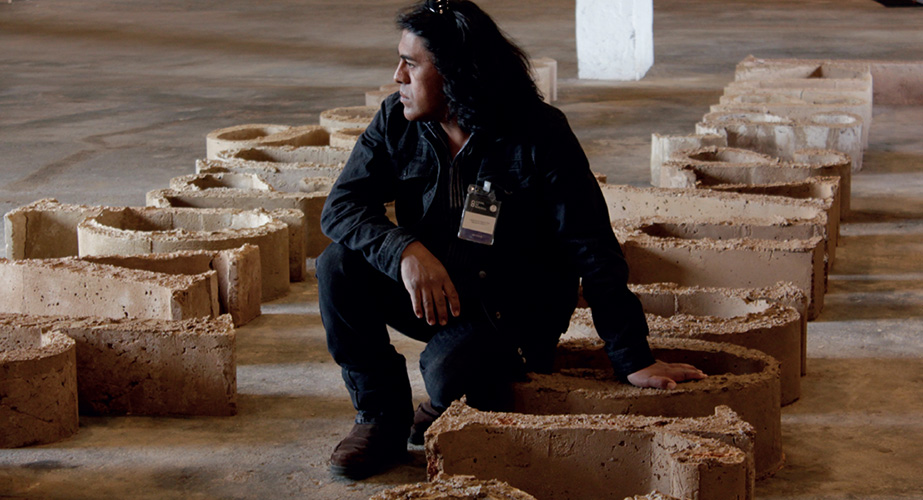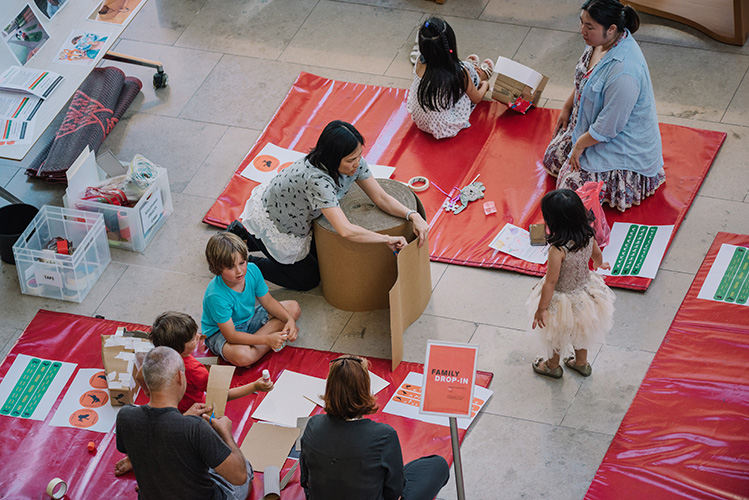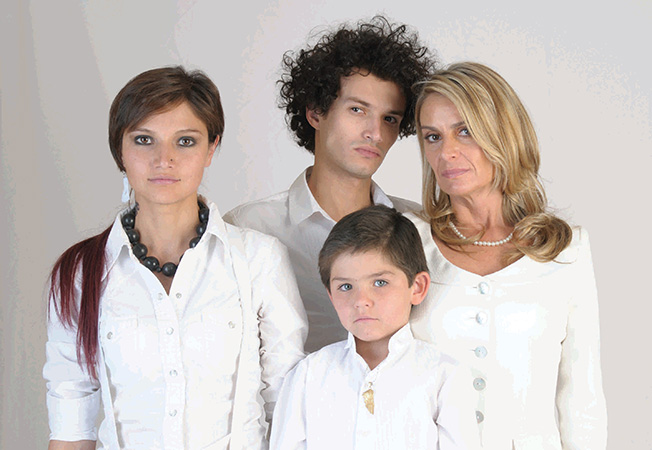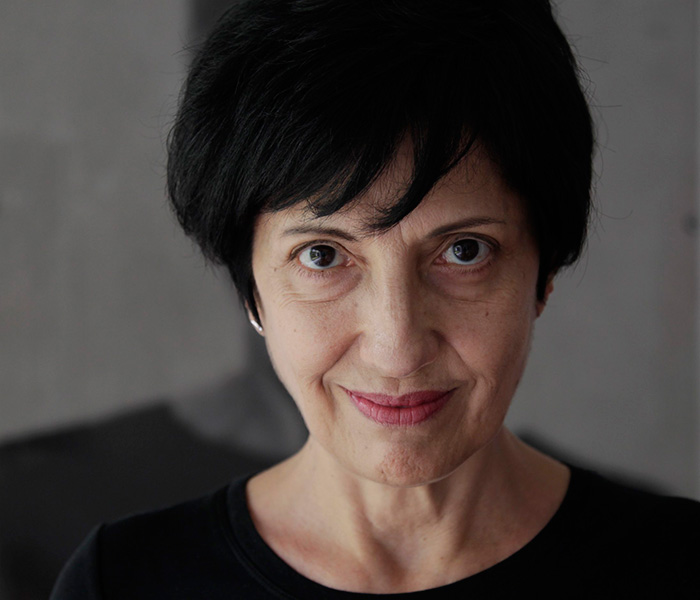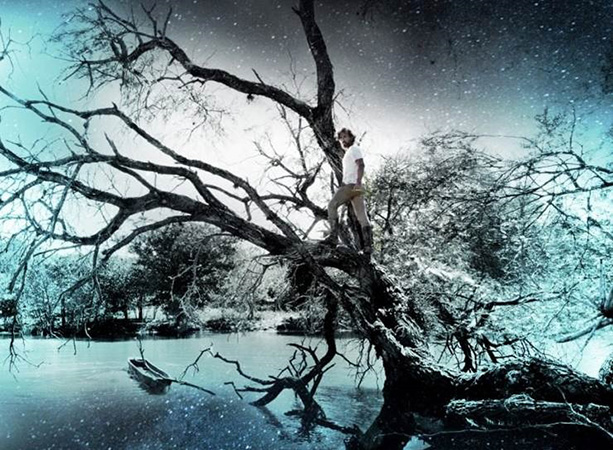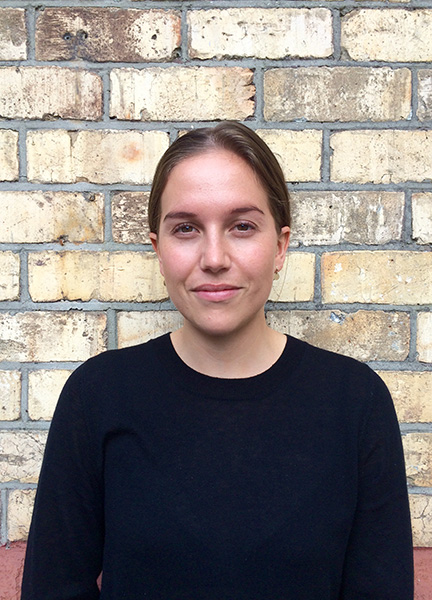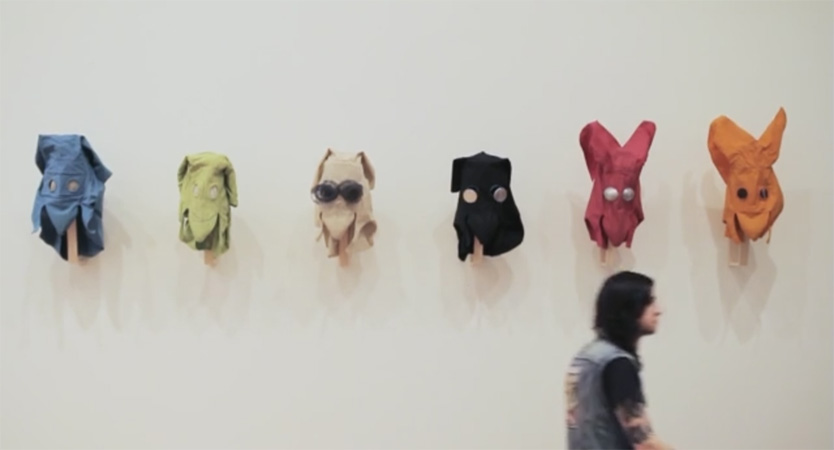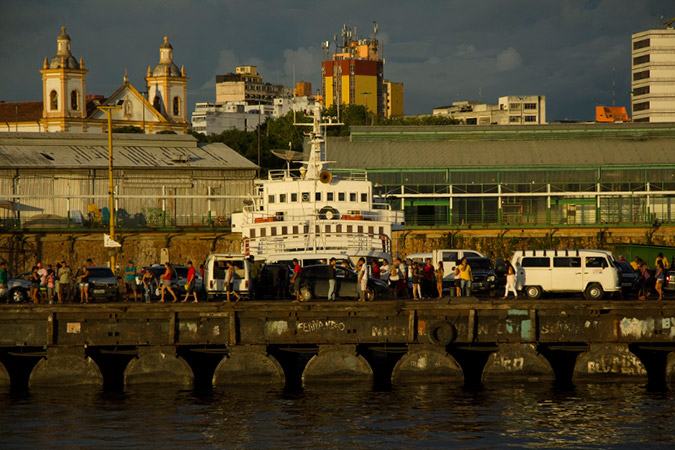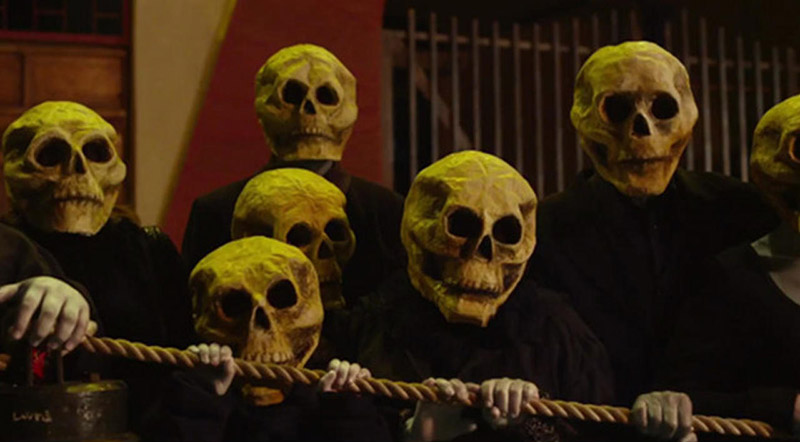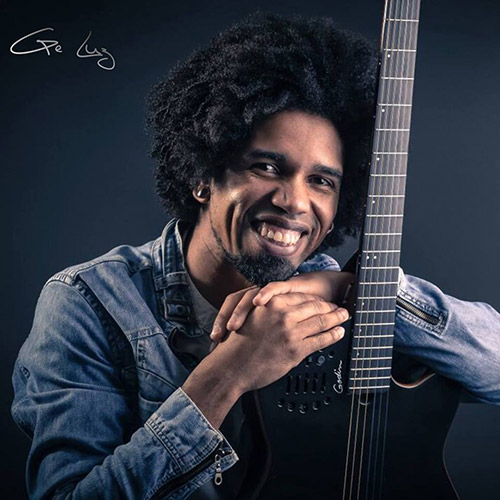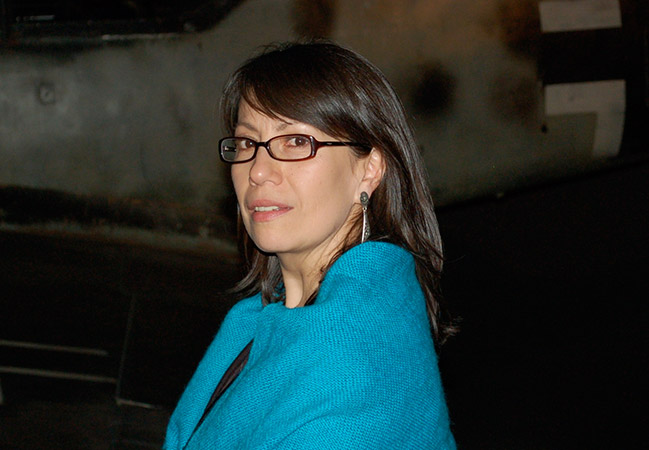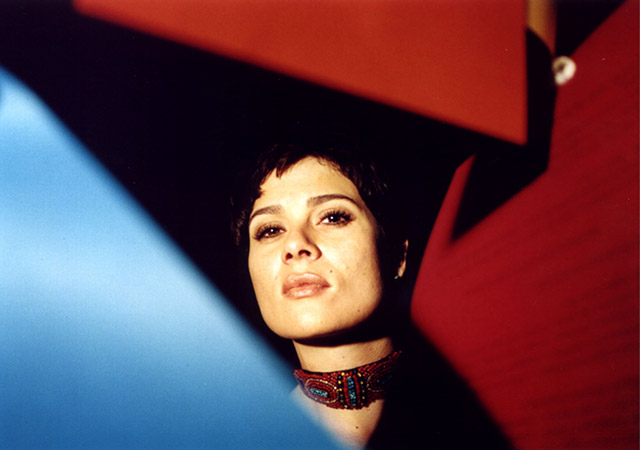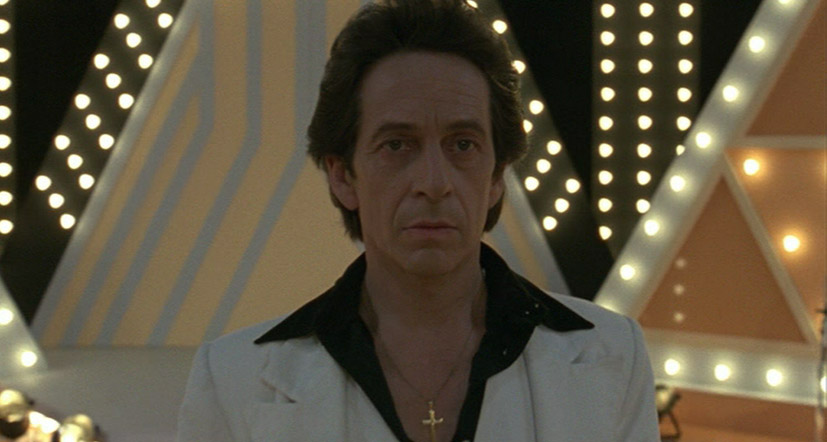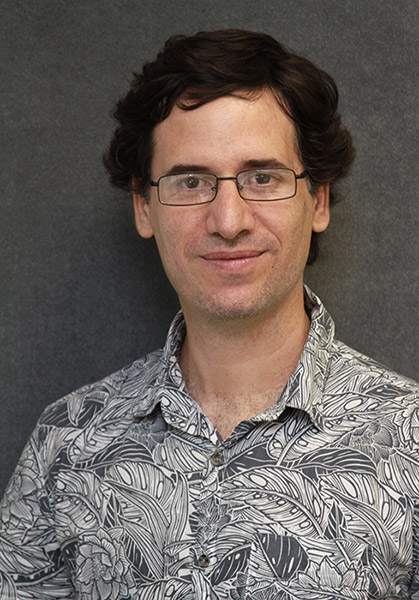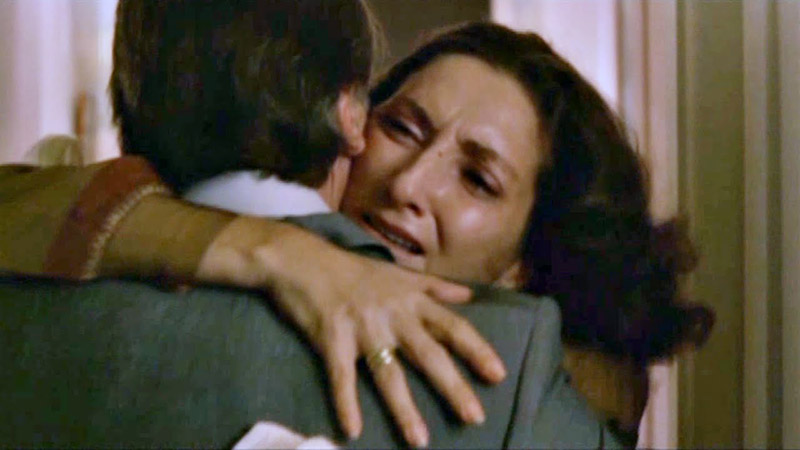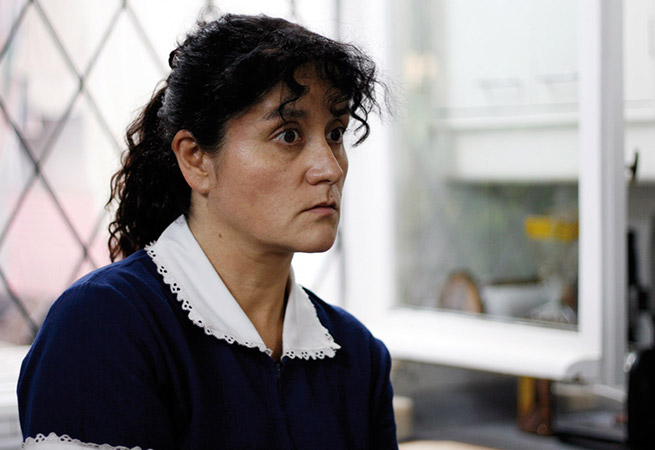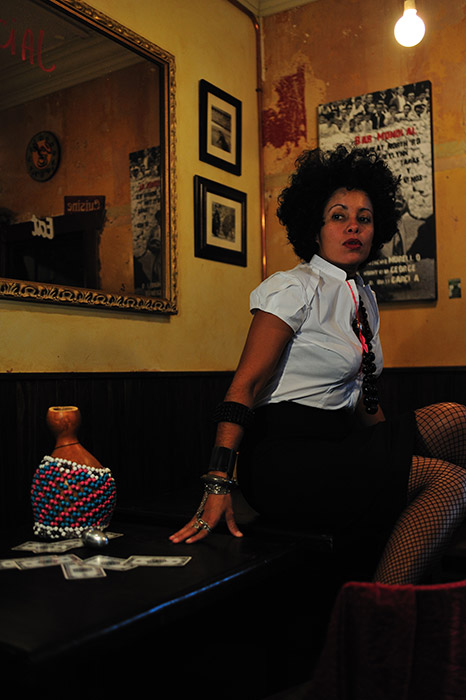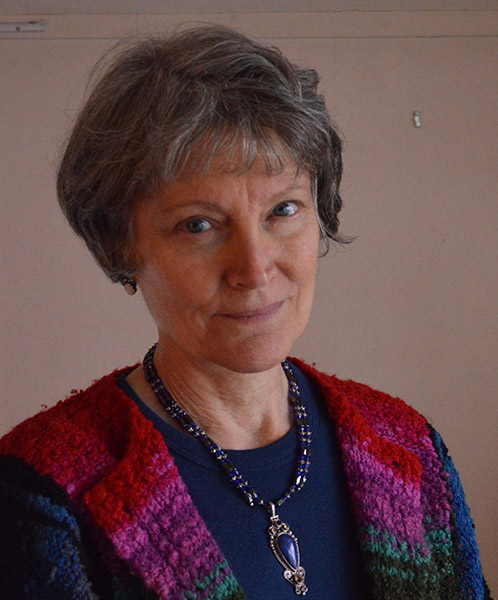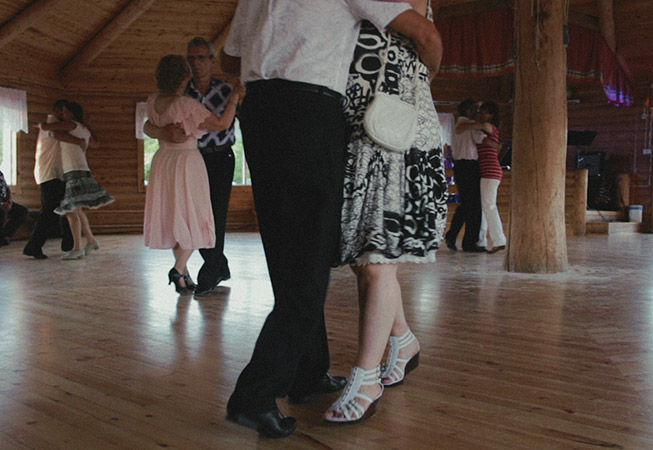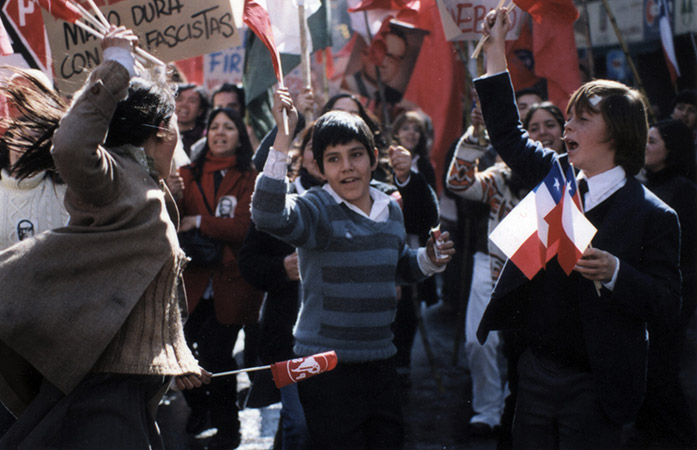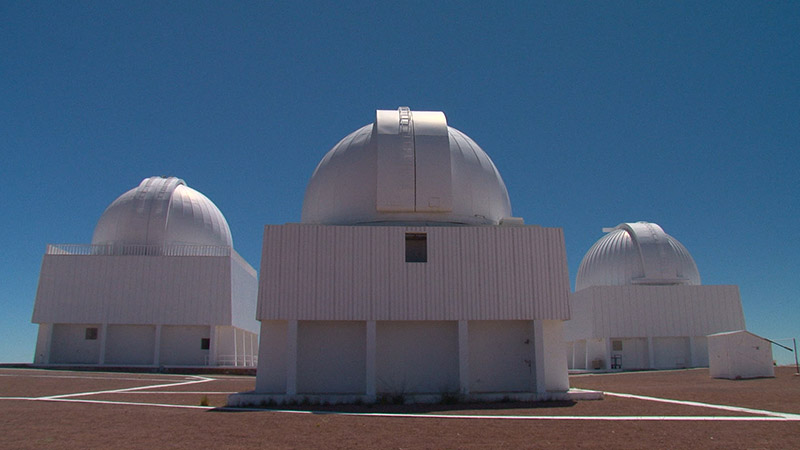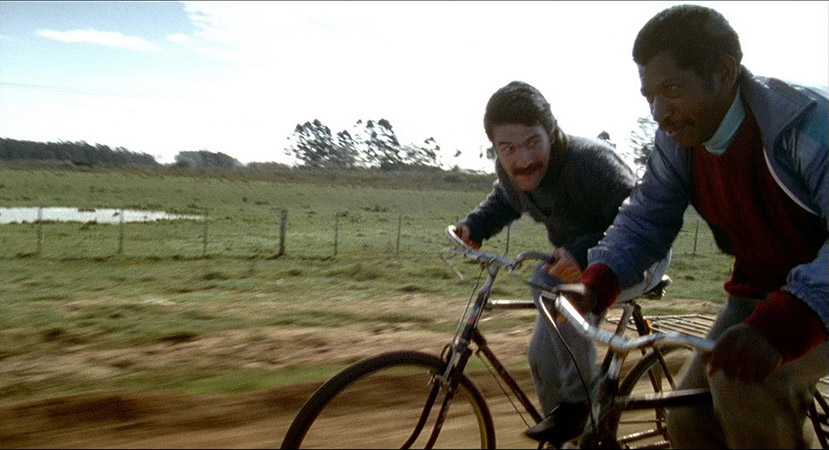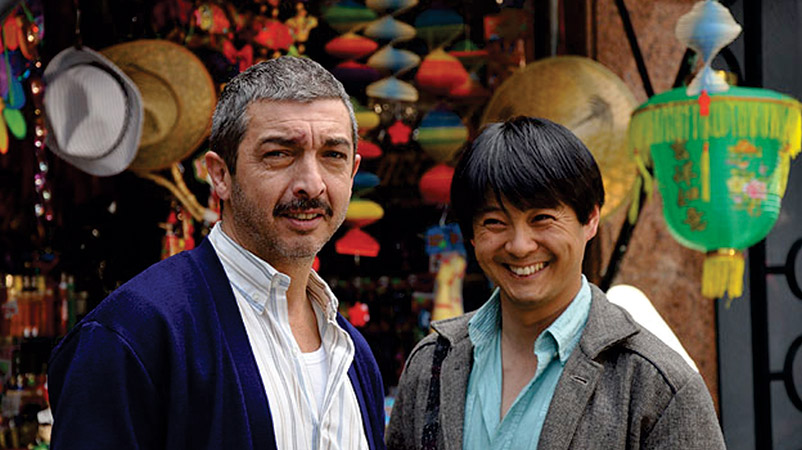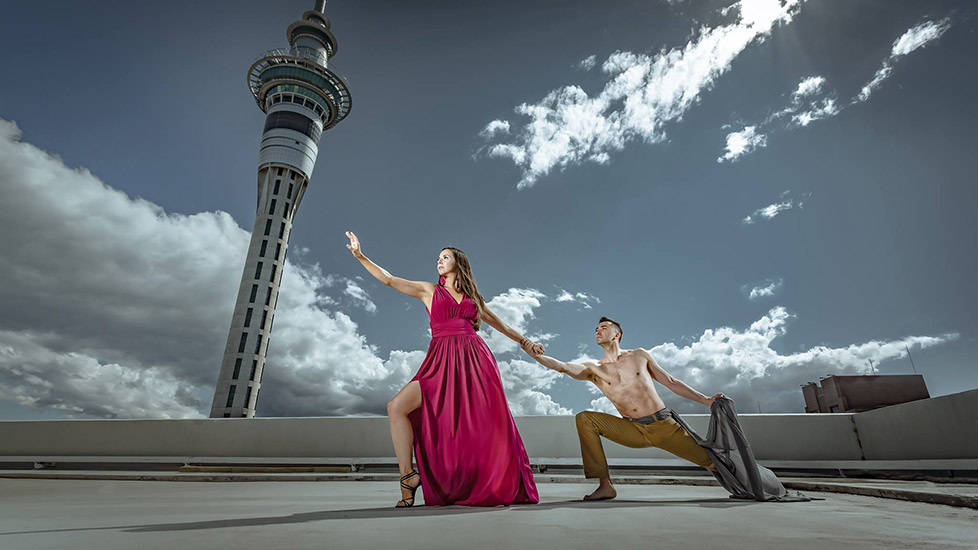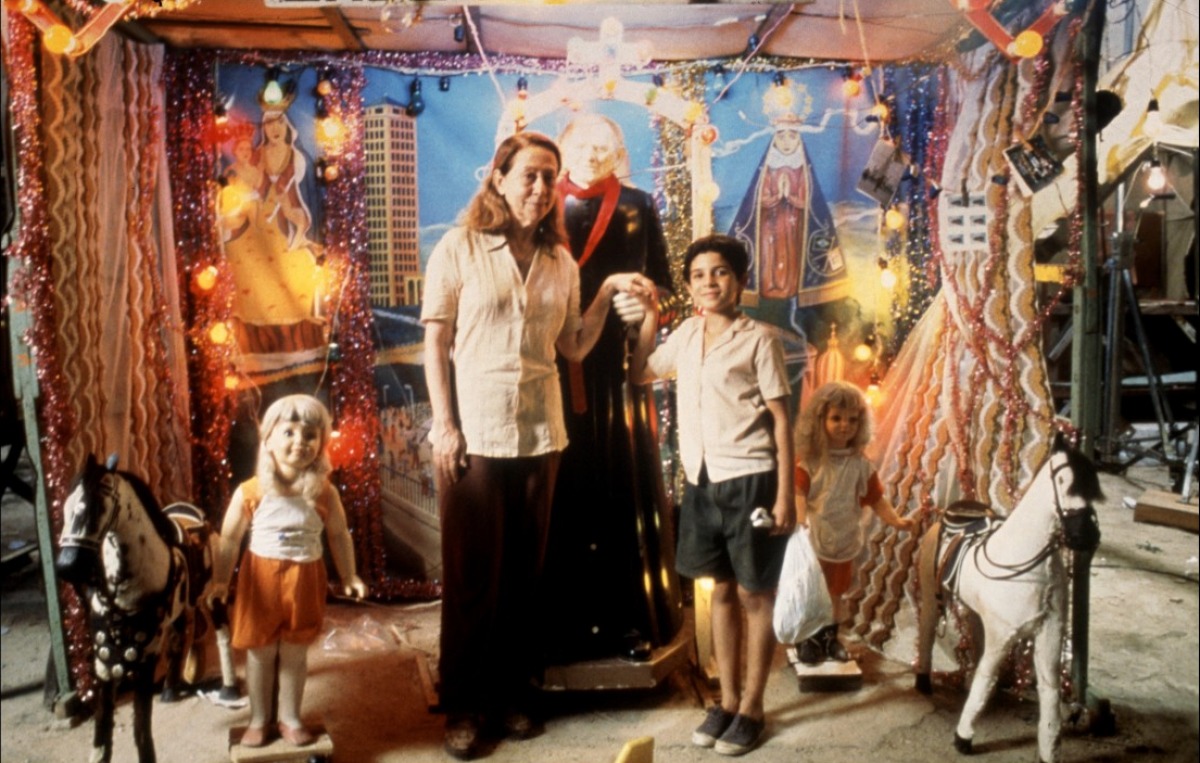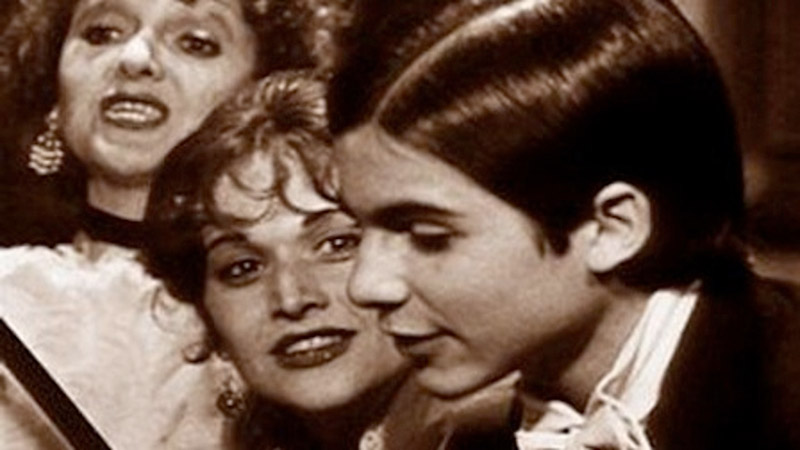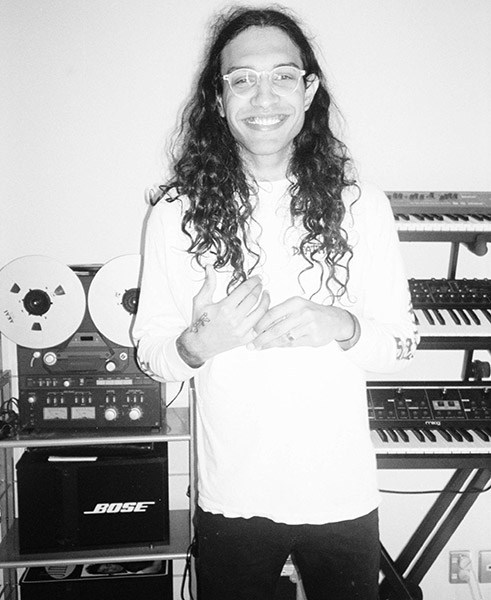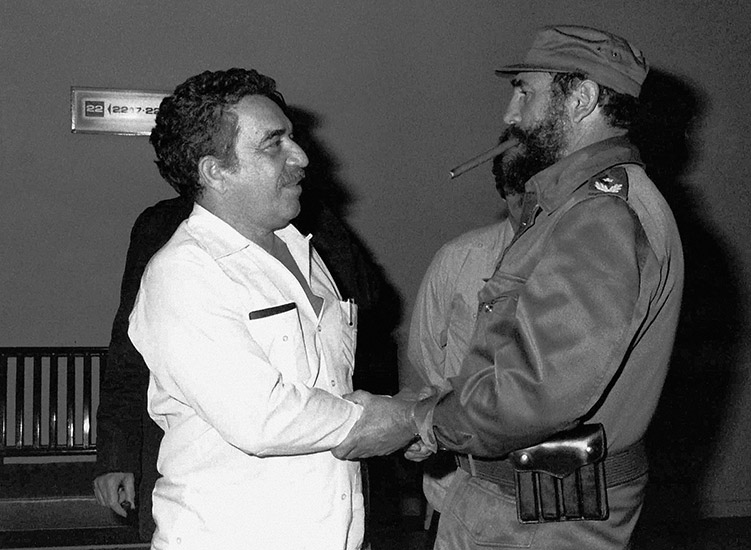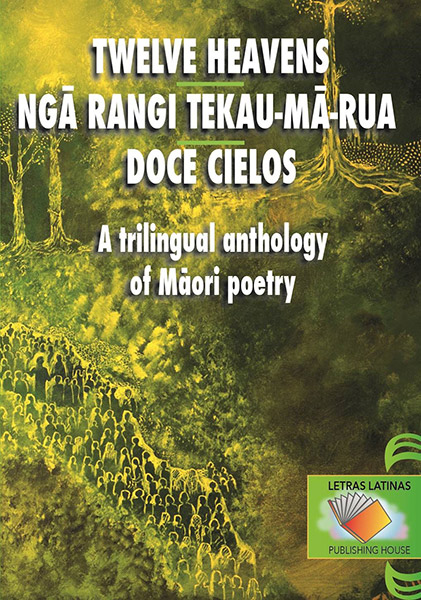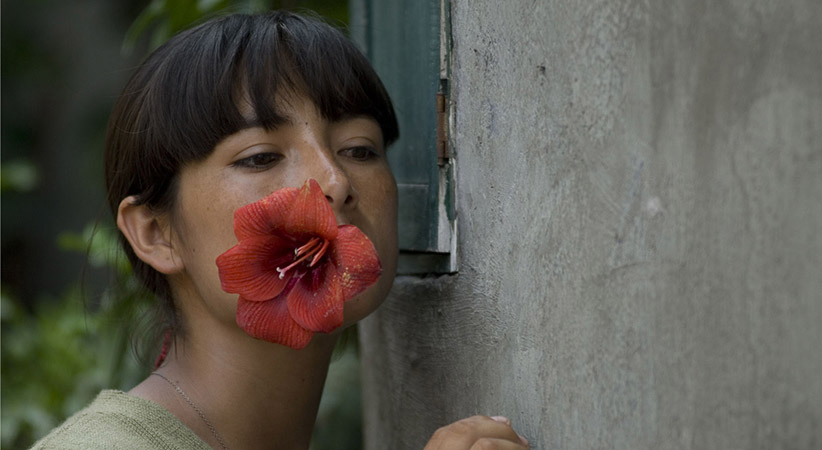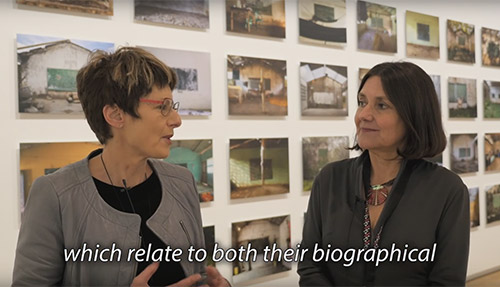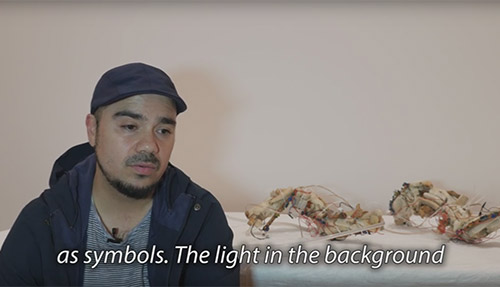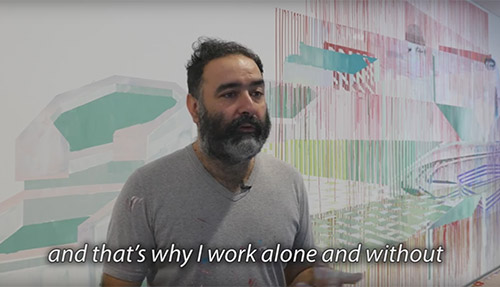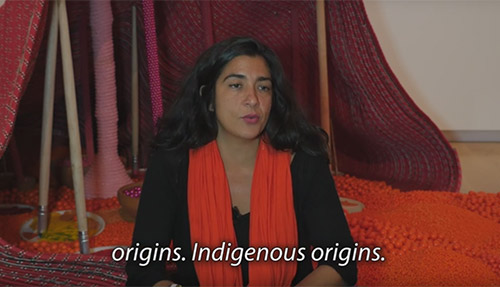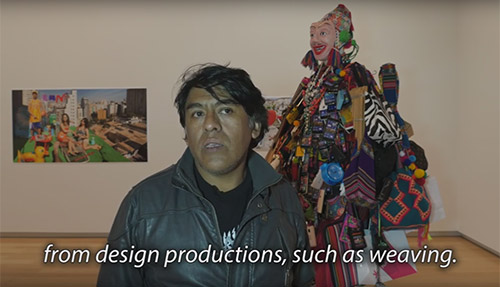Space to Dream is the first major exhibition in Australasia to introduce, in depth, the art of South America.
The exhibition reveals how South American artists see a social significance for their work and how as rebels and revolutionaries, dreamers and poets, they have challenged, embraced, explained or transformed their realities, lives, cultures and spaces from the 1960s to today.
Visit Space to Dream and experience the work of 41 artists and collectives, who include senior figures internationally recognised for their contribution to art as well as younger figures including Lygia Clark, Juan Fernando Herrán, Alfredo Jaar, Marcos Lopez, Ernesto Neto, Hélio Oiticia, Bernardo Oyarzún, Lotty Rosenfeld, Martín Sastre and many more.
Bringing together some of the most visually engaging painting, sculpture, photography, installation, film and performance from across six countries – Argentina, Brazil, Chile, Colombia, Paraguay and Uruguay – Space to Dream includes major works and exciting new commissions. The exhibition has been developed by Chilean curator Beatriz Bustos Oyanedel and Auckland Art Gallery Principal Curator and Head of Programmes, Dr Zara Stanhope and is accompanied by a rich and varied visitor programme.
Learn about the themes that connect the artworks in Space to Dream below.
#spacetodream
Image credit:
Máximo Corvalán-Pincheira, Proyecto ADN (DNA Project) 2012 (installation view), Auckland Art Gallery Toi o Tāmaki, 2016. Courtesy of the artist, Chile
In 1937, Joaquín Torres García drew an inverted map as a way of questioning how Latin America is positioned within traditional European perspectives.
Since then, artists in South America have been undermining the historical North–South divides to present alternative views and new possibilities. In the face of dictatorships and military regimes, artists took action to generate citizen movements against injustice. Some, like Lotty Rosenfeld, took to the street, prompting the public to join in.
Others, such as León Ferrari, Antonio Manuel and Lenora de Barros, have stimulated subtle ideas of resistance against disempowerment and discrimination. The work of all these artists – from different countries and generations – offers ways of resisting situations and opens up opportunities for change. The theme ‘Revolution’ also applies to the works of artists such as C.A.D.A. and Paulo Bruscky, further into the exhibition.
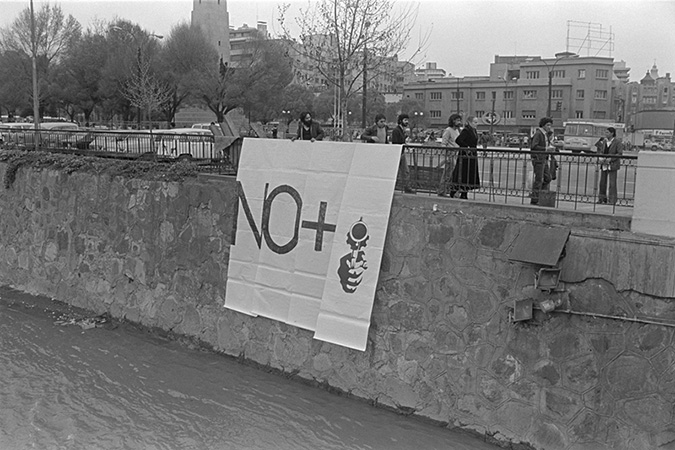
C.A.D.A.
NO+ (No More) (still) 1983–89
on loan from Museo Nacional de Bellas Artes, Santiago, Chile
Art in South America often looks at the need to recognise and include the region’s many cultures and histories.
Whether by adapting traditional crafts, rescuing indigenous imagery or using references from popular culture, many of the artists in Space to Dream aim to pull apart rigid definitions and to blend contemporary culture with popular art. For example, Juan Downey’s 1970s documentary on the Yanomami community was informed by a search for the South American identity.
Throughout the exhibition, you can find the weaving together of cultures, of indigenous and national histories, and of contemporary worldviews in the art of Joaquín Sánchez, Bernardo Oyarzún and Eugenio Dittborn. The complexity of South American society is also emphasised in the contemporary photographs of Marcos López.

Maria Nepomuceno
Grande Boca (Big Mouth) (installation view) 2013
courtesy the artist and Victoria Miro, London
© Maria Nepomuceno
Many artworks appeal to our creative impulse. They invite us to step into the unknown and to explore what might be possible or what could be discovered. This is the mark of a continent in constant transformation. Artists seek out and identify the beauty and character within histories, places and cultures. Colonial histories and personal memories connect in the work of Fernando Arias, while Eduardo Navarro’s bronze walnuts are like time capsules, forming pockets of memory created especially for rediscovery.
Images and language are powerful forces that can increase meaning and alter assumptions. ‘Poetry’ feels ever-present in South America. From the anti-poetry of Nicanor Parra to the word play of Lenora de Barros and Juan Castillo, it exists in multiple art forms here. Poetry can also be found in the pursuit of happiness in the self-created suburbs of many cities and towns – images of which you can experience here. These places defy geography to offer a space where dreams may come true.

Eduardo Navarro
Monuments 2016
courtesy of the artist, Argentina
Today, life in South America is a fusion of multiple histories, traditions and influences. This blend of cultures, languages and different world perspectives is reflected in the work of many artists here. The unique interweaving of cultures is expressed by the Spanish word mestizo: a person of combined European and Amerindian descent.
As part of this blending, artists select and re-present iconic imagery from the past. In the process they create fresh meanings in different forms and ensure the continued visual presence of important historical material. Referencing work of indigenous makers or craftspeople and combining this with elements from popular culture breaks down the separation of the past and the present. These artists create a politically powerful mix of cultural forms that are linked across time and place.
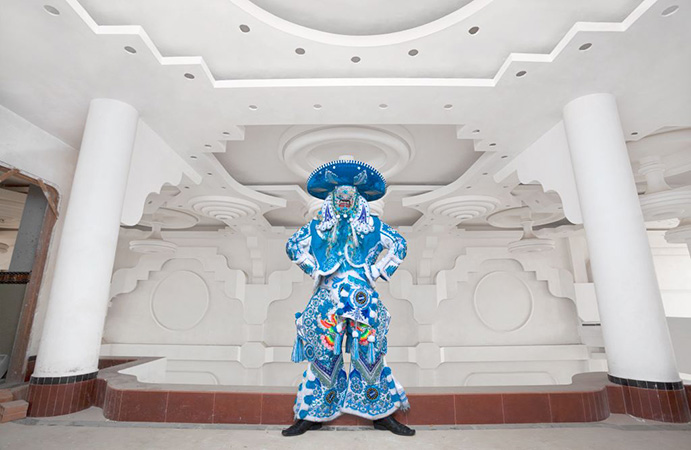
Demian Schopf
La Nave [Ch’uta Mariachi] (The Ship (Ch’uta Mariachi)) 2015
courtesy of the artist, Chile
Artists from South America play a role in documenting and remembering people who have suffered injustice or trauma. They create records that prevent loss and transport us to a space that’s somewhere between dream and reality. In this way art creates memories that act less as a guard against forgetting than as a way of shifting our thoughts. Máximo Corvalán-Pincheira’s reflection on the impact of DNA testing in locating the remains of missing people is an example.
Rosângela Rennó’s photography evokes the tenacity and fragility of memory and history, while pointing to the fact that some stories become the accepted version of the past.
Symbols are commonly used by artists to express events or experiences that are too painful for words or to communicate in situations of imposed silence. They help us to connect with the most intimate pain through personal biography or to share thoughts and feelings. Humour is also used by artists. Alejandro Thornton playfully reinforces the importance of Argentinian political figure, Eva Perón.

Rosângela Rennó
Boots 1996–2000 from: Série Vermelha (Militares) (Red Series)
on loan from Marcio Lobão, Rio de Janeiro, Brazil
Rebels are associated with small or large acts of change or transformation. Through their work, many artists have defied the conventions of their day to establish new ideas and forms of art that offer a way for others to act for change. In their searches for ways to denounce oppressive social and political regimes, Paulo Bruscky and Virginia Errázuriz broke conventional understandings of what art is. Acts that in their context seemed small and quiet suddenly became potent, creative forms of resistance that established strong connections between art and life.
Artists from this region have also pioneered ways of physically and sensually involving audiences in art. The innovative work of Lygia Clark and Hélio Oiticica takes inspiration from carnival. Drawing on and experimenting with popular forms of architecture and music, and turning to psychology, artists continue to inform and change art around the world and to pave the way for newer generations to similarly challenge boundaries.

Lygia Clark
O Eu e o Tu (The I and the You) 1967, 2016
on loan from the Cultural Association of The World of Lygia Clark (Associação Cultural O Mundo de Lygia Clark)
Space to Dream offers a view into the way artists in South America engage with and influence contemporary life and culture. Whether conveying politics or poetry, the spiritual or the profane, recent art from South America offers a place for reflection. Through their work, artists have been able to take a critical stance, encourage social consciousness or document revolutionary actions – individually and collectively, they have demonstrated the power of art and artists to bring about change. Alongside this, the playful attitude of artists such as Maria Nepomuceno and Ernesto Neto creates insightful, democratic concepts of culture. The mingling of indigenous and other cultures is expressed in ways that keep alive the multiple histories of the region.
Other artists create an imagined future that is both innovative and inviting – this space to dream, where disaster coexists with complex cultures and dynamic societies, uses the poetic to create new meanings and possibilities.
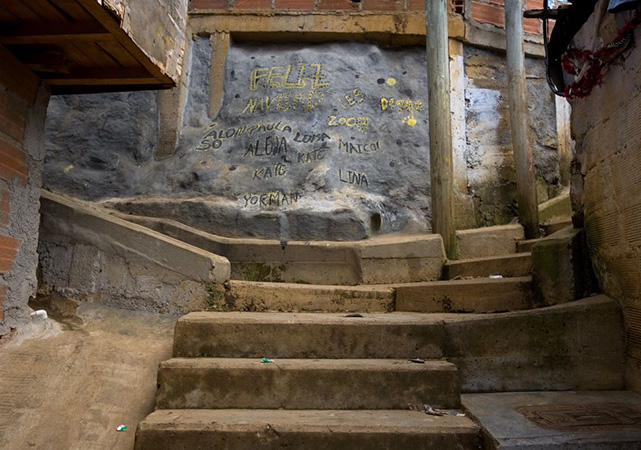
Juan Fernando Herrán
Bifurcación (Junction) 2008
courtesy of the artist and Galería Nueveochenta, Bogotá, Colombia
Tickets
Buy tickets online or purchase on any day of the exhibition from the Gallery's information desk.
Any-day admission
General admission $15
Earlybird tickets $12.50
Concession $10
Children 12 and under FREE
Members FREE
Partner offers
Rialto Cinemas Cine Buzz members $10
Delegates at Auckland Conventions’ venues $10
More information
Prices include GST. Booking and delivery fees, where charged, are additional to the admission price.
Concession rate applies to CSC holders, Seniors and Students with ID. Children 14 and under must be accompanied by an adult. Members must present a valid membership card.
All education group visits to Space to Dream for 10 or more people must be booked at least two weeks in advance – see the Visit section below for further information.
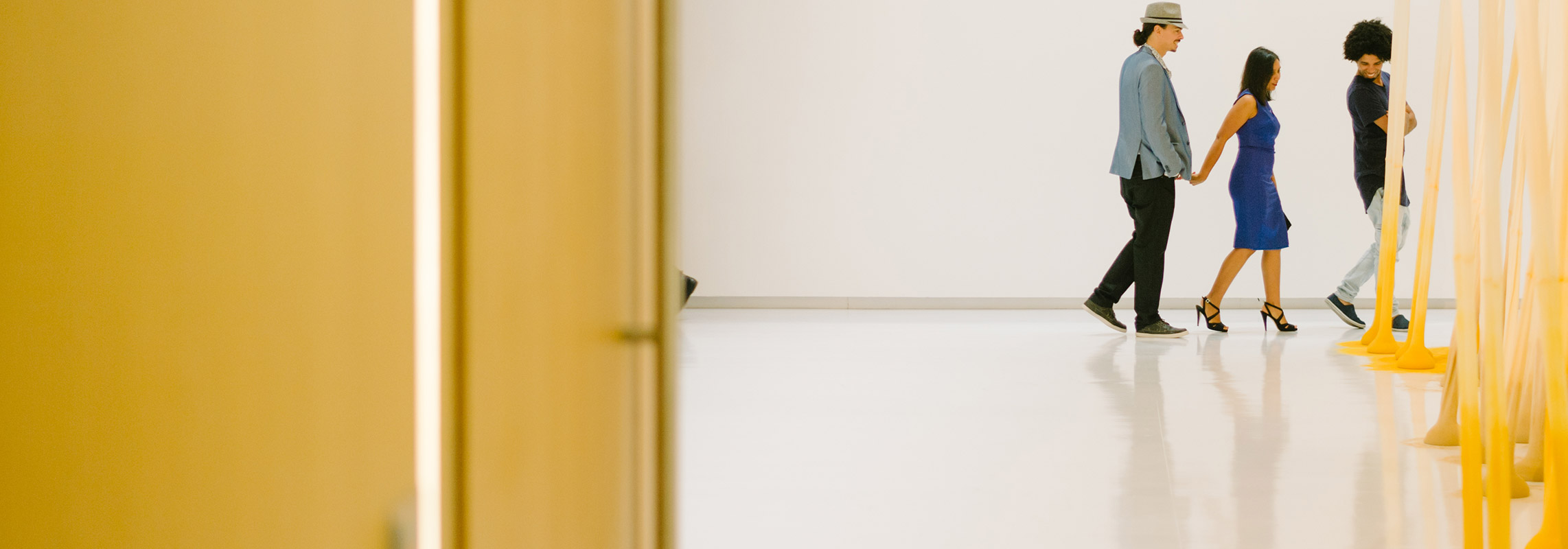
Full of beautiful textures, colours and surprises!!'
Visitor
Events
Explore exhibition themes and celebrate the vibrancy of South American culture through events that include four special Space to Dream weekends full of talks, music, dance and film – full details below.
Visit on a Saturday and join one of our volunteer guides on a 30-minute tour of the exhibition at 12.45pm.
Experience the exhibition after hours during a special one-off Open Late on Tuesday 6 September. The Gallery will be open from 6–10pm and there will be live music from Scuba Diva and the Friendly Potential DJs. Pay bar and food available.
Past events
Past events
Visit
Groups
All education group visits to Space to Dream for 10 or more people must be booked at least two weeks in advance of your visit and must be confirmed by the Gallery in writing.
Tours will include an introduction to Space to Dream and a selection of artworks and ideas in the exhibition. The duration and nature of your tour will be negotiated when you book.
To make a booking, email us with the details of your group, group size and preferred date(s) and time(s) of visit. Payment can be made at the Gallery's front desk on the day of your visit.
Early childhood, primary, secondary and tertiary education group bookings
For all education groups on a general visit to Space to Dream, we offer entry to the exhibition and the support of our Volunteer Guides for your group visit.
Early childhood groups FREE
Primary school groups FREE
Secondary school groups $5
Tertiary and ESOL groups $10
Adult helpers (per person) $10
Cost per person, for groups of 10 or more people. Bookings essential for guided tour.
Adult education group bookings
Adult education groups $15
Cost per person, for groups of 10 or more people. Bookings essential for guided tour.
Facilitated education programmes
We offer regular facilitated programmes for schools, some of which focus on a specific work or works in Space to Dream. For details of these programmes, visit our Primary and Secondary pages and look out for references to Space to Dream.
Booking is strongly recommended and booked groups will be prioritised. Large groups will be admitted into the exhibition in smaller groups.
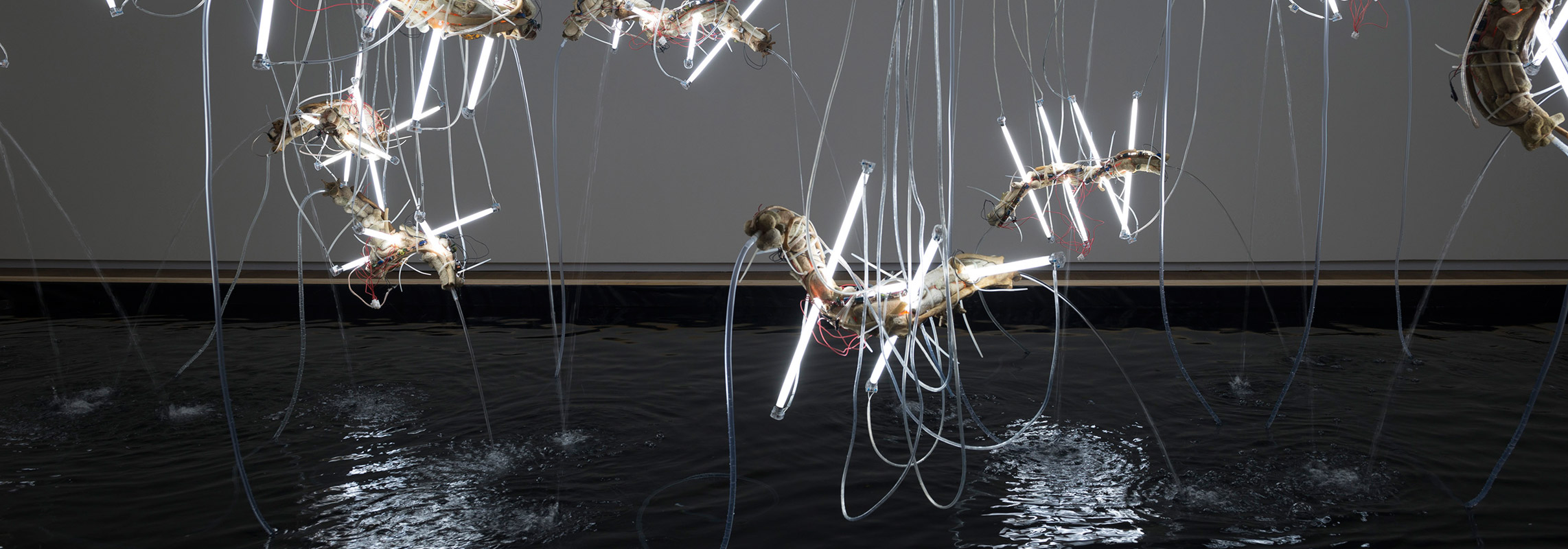
Space to Dream is proof that resistance to oppression, dictatorship, brutality and fear can produce beautiful, important work…’
Anthony Byrt, Metro magazine
Extras
List of artists and artist collectives in Space to Dream
Fernando Arias
Born 1963, Armenia, Colombia
Lives and works in Colombia and the UK
Catalina Bauer
Born 1976, Buenos Aires, Argentina
Lives and works in Santiago, Chile
Paulo Bruscky
Born 1949, Recife, Brazil
Lives and works in Recife, Brazil
Colectivo de Acciones de Arte (C.A.D.A.)
(Action Art Collective)
Santiago, Chile 1979–89
Fernando Balcells / Born 1950, Santiago, Chile
Lives and works in Santiago, Chile
Juan Castillo / Born 1952, Antofagasta, Chile
Lives and works in Stockholm, Sweden
Diamela Eltit / Born 1949, Santiago, Chile
Lives and works in Santiago, Chile
Lotty Rosenfeld / Born 1943, Santiago, Chile
Lives and works in Santiago, Chile
Raúl Zurita / Born 1951, Santiago, Chile
Lives and works in Santiago, Chile
Luis Camnitzer
Born 1937, Lubeck Germany
Lives and works in New York City, USA
Juan Castillo
Born 1952, Antofagasta, Chile
Lives and works in Stockholm, Sweden
Carlos Castro
Born 1976, Bogotá, Colombia
Lives and works in Bogota, Colombia
Lygia Clark
Born 1920, Belo Horizonte, Brazil
Died 1988, Rio de Janeiro, Brazil
Máximo Corvalán-Pincheira
Born 1973, Santiago, Chile
Lives and works in Santiago, Chile
Jonathas de Andrade
Born 1982, Maceió, Brazil
Lives and work in Recife, Brazil
Lenora de Barros
Born 1953, São Paulo, Brazil
Lives and works in São Paulo, Brazil
Eugenio Dittborn
Born 1943, Santa Cruz, Chile
Lives and works in Santiago, Chile
Juan Downey
Born 1940, Santiago, Chile
Died 1993, New York City, USA
Ronald Duarte
Born 1962, Barra Mansa, Brazil
Lives and works in Rio de Janeiro, Brazil
Juan Manuel Echavarría
Born 1947, Medellín, Colombia
Lives and works in Bogota, Colombia
Virginia Errázuriz
Born 1941, Santiago, Chile
Lives and works in Santiago, Chile
León Ferrari
Born 1920, Buenos Aires, Argentina
Died 2013, Buenos Aires, Argentina
Ignacio Gumucio
Born 1971, Viña del Mar, Chile
Lives and works in Santiago, Chile
Patrick Hamilton
Born 1974, Leuven, Belgium
Lives and works in Madrid, Spain
Juan Fernando Herrán
Born 1963, Bogotá, Colombia
Lives and works in Bogotá, Colombia
Alfredo Jaar
Born 1956, Santiago, Chile
Lives and works in New York City, USA
Cristóbal León
Born 1980, Santiago, Chile
Lives and works in Santiago, Chile
- And -
Joaquín Cociña
Born 1980, Concepción, Chile
Lives and works in Santiago, Chile
Marcos López
Born 1958, Santa Fe, Argentina
Lives and works in Buenos Aires, Argentina
Kevin Mancera
Born 1982, Bogotá, Colombia
Lives and works in Bogotá, Colombia
Antonio Manuel
Born 1947, Avelãs de Caminha, Portugal
Lives and works in Rio de Janeiro, Brazil
Cinthia Marcelle
Born 1974, Belo Horizonte, Brazil
Lives and works in Belo Horizonte, Brazil
Eduardo Navarro
Born 1979 Buenos Aires, Argentina
Lives and works in Buenos Aires, Argentina
Maria Nepomuceno
Born in 1976 in Rio de Janeiro, Brazil
Lives and works in Rio de Janeiro, Brazil
Ernesto Neto
Born 1964, Rio de Janeiro, Brazil
Lives and works in Rio de Janeiro, Brazil
Hélio Oiticica
Born 1937, Rio de Janeiro, Brazil
Died 1980, Rio de Janeiro, Brazil
Bernardo Oyarzún
Born 1963, Llanquihue, Chile
Lives and works in Santiago, Chile
Liliana Porter
Born 1941, Buenos Aires, Argentina
Lives and works in New York City, USA
Rosângela Rennó
Born 1962, Belo Horizonte, Brazil
Lives in Rio de Janeiro, Brazil
Miguel Ángel Ríos
Born 1943, Catamarca, Argentina
Lives and works in Mexico City, Mexico and New York City, USA
Lotty Rosenfeld
Born 1943, Santiago, Chile
Lives and works in Santiago, Chile
Joaquín Sánchez
Born 1977, Barrero, Paraguay
Lives and works in La Paz, Bolivia and Asunción, Paraguay
Martín Sastre
Born 1976, Montevideo, Uruguay
Lives and works in Montevideo, Uruguay
Demian Schopf
Born 1975, Frankfurt am Main, Germany
Lives and works in Santiago, Chile
Alejandro Thornton
Born 1970, Buenos Aires, Argentina
Lives and works in Buenos Aires, Argentina
Blogs
Publication
Video
FAQs
Space to Dream is on show at Auckland Art Gallery from Saturday 7 May – Sunday 18 September 2016. The exhibition is open during normal Gallery hours, 10am–5pm, and is located on level 1. Download a map of the Gallery.
See the Tickets section above for full details. For online tickets, Eventfinda's standard terms and conditions apply.
Gallery Members receive free unlimited entry to Space to Dream and all ticketed exhibitions at Auckland Art Gallery. Visit the Membership page for details.
Yes. Bookings for education groups (including adult education groups) of 10 or more people should be made by emailing us with the details of your group, group size and preferred date(s) and time(s) of visit. Booked groups will be prioritised.
Any-day tickets provide you with exhibition admission on a single day only, but you may visit the exhibition more than once during that day.
Auckland Art Gallery Members and Members Guests receive FREE unlimited entry to Space to Dream.
Your ticket price contributes to the costs involved in developing an exhibition of this scale and in bringing international artworks to New Zealand.
No. Entry to Auckland Art Gallery Toi o Tāmaki is free. All other exhibitions, the Todd Foundation Creative Learning Centre and the E H McCormick Research Library remain free of charge.
Yes. Enjoy at short 30-minute tour of Space to Dream on Saturdays at 12.45pm.
We recommend allowing at least 60 minutes to view Space to Dream. Last entry will be at 4pm daily.
Yes, it is accompanied by a special visitor programme. See the Events section above for details. You can also subscribe to our fortnightly enewsletter to receive the latest information on upcoming events straight to your inbox – sign up at the bottom of any page on our website.
Yes. The bilingual Space to Dream publication with information on each of the artists and background essays by South American and New Zealand writers will be available for purchase in our shop on the ground level.
Yes. You are welcome to take photographs for personal use, but please do not use the flash. View the Gallery's full photography policy. Share your photos on social media with #spacetodream.
Families with children of all ages are very welcome, although as always parental guidance is advised.
Children aged 12 and under go FREE to Space to Dream.
A Space to Dream Children’s Trail is available for free to use in the exhibition.
Please note we don't allow food or drink in the exhibition and ask that you don't touch the artworks.
After viewing the exhibition, extend your visit with a trip to Todd Foundation Learning Centre exhibition Hole of Yellow Archipelago or join a family drop-in on Saturdays from 1–3pm.
Space to Dream: Recent Art from South America has been developed for Auckland Art Gallery by Chilean curator Beatriz Bustos Oyanedel and Auckland Art Gallery Principal Curator and Head of Programmes, Zara Stanhope. At this stage, the exhibition is not planned to tour and can only be seen at the Gallery.
